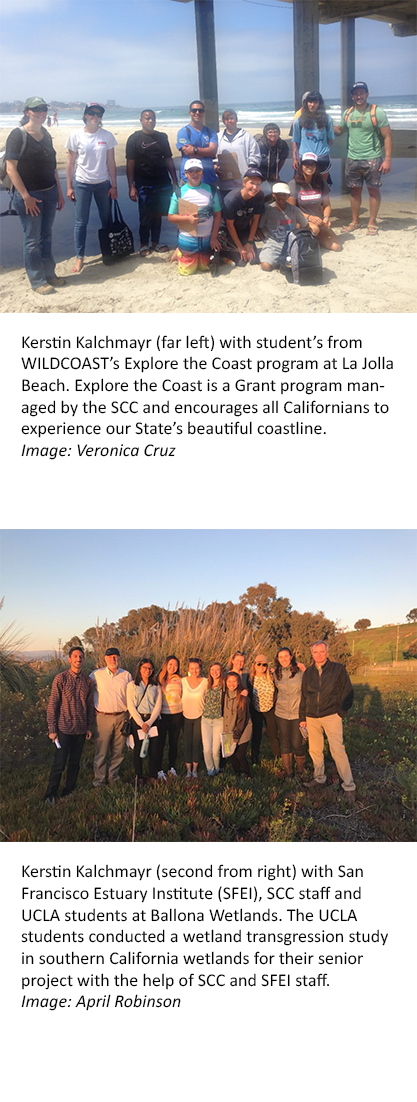During my time as a Sea Grant Fellow at the State Coastal Conservancy (SCC), one of my primary projects I have been working on is the Southern California Wetland Recovery Project (SCWRP). This project is a regional coordinated effort working together with numerous federal, state and local partners in promoting ecologically sound wetland restoration within the highly urban landscape of southern California.
 One of the main challenges the project has faced is identifying sources of funding that support all project needs, from planning to project implementation and long-term management. During my fellowship, I was excited to learn about a new funding source the Conservancy is currently setting up to support their work in southern California, namely an In-Lieu Fee Program (ILF). This was territory I was completely unfamiliar with but I was curious to learn more as we all know funding can be a MAJOR constraint on getting many-a-fabulous-project off the ground. Getting innovative and creative in finding money is extremely useful, especially in today’s political and economic climate!
One of the main challenges the project has faced is identifying sources of funding that support all project needs, from planning to project implementation and long-term management. During my fellowship, I was excited to learn about a new funding source the Conservancy is currently setting up to support their work in southern California, namely an In-Lieu Fee Program (ILF). This was territory I was completely unfamiliar with but I was curious to learn more as we all know funding can be a MAJOR constraint on getting many-a-fabulous-project off the ground. Getting innovative and creative in finding money is extremely useful, especially in today’s political and economic climate!
What is an In-Lieu Fee Program and how does it work?
An In-Lieu Fee Program is an agreement between a regulatory agency or agencies and a sponsor agency (in this case the SCC), whereby the sponsor agency collects funds from permitees aka developers who have been permitted by the regulatory agencies to incur unavoidable harmful impacts to natural resources. In lieu of the permitees undertaking compensatory mitigation for these impacts, the permittees may be directed by regulators to buy ‘credits’ from an ILF Program. In this transaction, the ILF Program’s sponsor takes on all legal obligations for the mitigation (implementation, monitoring and management) and directs the credit sale funds towards mitigation projects.
By law, State agencies cannot create and manage mitigation banks, but they can operate ILF Programs. Furthermore, an ILF fits in well with the SCWRP’s goals and vision. Other than increasing locally derived funding sources for local projects, the ILF provides a way for the SCC to collect funds for restoration and direct them towards priority projects. It also allows the Conservancy to maintain long-term control over these mitigation projects and ensure these projects are achieving the habitat and restoration goals outlined in the SCWRP’s latest Regional Strategy.
Any planning and restoration project applying to the SCWRP’s Work Plan may choose to apply to be funded under the ILF Program. However, as ILF money has many rules and restrictions and additional inter-agency review, eligible projects have to decide if applying for ILF funding is appropriate for them.
Written by Kerstin Kalchmayr



